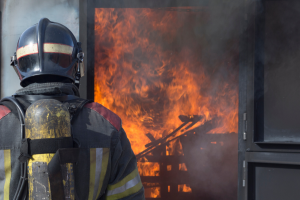
The Five Main Aims of First Aid
Accident prevention in the workplace is one of an employer’s main responsibilities to keep employees safe. However, accidents do happen without warning, both in the workplace and life in general, so first aid is essential to mitigate the effects.
First aid has several main aims. The first three of these are often referred to as the ‘Three Ps’ — preserve, prevent, promote — but two others are almost as important.
1. Preserving Life
This is the most important aim of first aid when someone has life-threatening injuries and involves providing a basic level of care until help arrives. The first task is to check the patient’s vital signs — breathing, heart rate, movement, responsiveness and if there are any obvious bad injuries. Appropriate action may then be taken if an injury is life-threatening — performing CPR, opening airways or applying pressure to reduce blood loss, for example.
First aiders also need to ensure their own safety so they can do their job properly. This may involve completing a quick risk assessment to check for danger to anyone and taking steps to minimise the danger.
2. Preventing Deterioration
Injuries that are not dealt with promptly can get worse and cause further harm. So it’s important to identify the problem and take appropriate action quickly. For example, cleaning a wound with antiseptics will prevent infection while padding and immobilising a broken limb will avoid movement and further pain.
External risk factors should also be removed when possible to prevent further harm. However, the patient should only be moved from the area if there are no spinal injuries or other problems that may make the situation worse.
3. Promoting Recovery
Simple procedures can be carried out that will improve the patient’s prospects in the future. For example, bandaging a wound can prevent further blood loss and help it knit together while cooling a burn will speed the healing process and reduce the risk of severe scarring.
Swift and effective action can reduce the need for a hospital stay or reduce its length. It will also ensure the patient is more likely to make a full recovery.
4. Relieving Pain
People who have accidents may experience severe pain and trauma. Different steps can be taken to relieve this, which are often referred to as RICE procedures:
- Resting the affected area by ensuring it doesn’t move
- Ice applied to cool the affected area
- Compression by applying pressure or a bandage
- Elevation of the affected area to increase blood flow.
Medication may be given to relieve pain but only if it is safe to do so. Some medications may increase bleeding or cause other risks so should not be given if uncertain about the consequences.
5. Protecting the Unconscious
People who are unconscious are at their most vulnerable, partly because they cannot explain their symptoms. The first task is to check for vital signs and perform CPR if needed.
If the person is in a hazardous place, they may be removed to somewhere better providing it is safe to do so, otherwise, hazards should be cleared as much as possible. If a spinal injury is suspected, the patient should not be moved at all. In other cases, put them in the recovery position — on their side with their arms and legs bent to prevent rolling and the head supported by an arm.
At Diamond Protection registered training organisation in Australia, we provide a range of courses to teach basic and advanced first aid suitable for different industries and purposes. Anyone completing a first aid training in Brisbane or anywhere in Australia will at least have a grasp of the main aims and be able to achieve them by following what they have learned.

